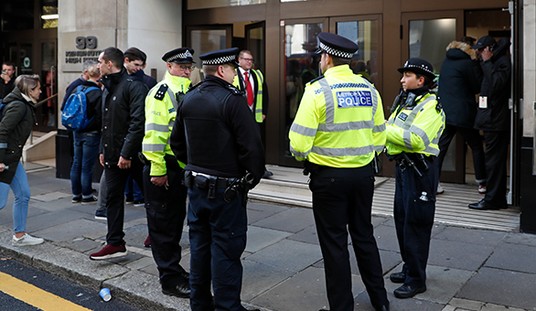I missed this story when it appeared Thursday at the Washington Post’s Monkey Cage blog. A pair of researchers with MIT’s Election Data and Science Lab have gone over the results of the last Bolivian election and claim they see no evidence of fraud. That contradicts the conclusion of the OAS report issued last year.
As you may recall, the OAS report was the chief support for the idea that the election had been tampered with. It led to Evo Morales being encouraged to leave office by the military under a cloud of suspicion. He sought asylum in Mexico. At the time all of this was happening, many on the left including AOC and Bernie Sanders were calling Morales ouster a “coup.” The Post’s new report essentially argues, based upon a statistical look at the data, that Morales may have legitimately won the election:
The Bolivian constitution requires that a candidate either earn an outright electoral majority or 40 percent of the votes, with at least a 10-percentage-point lead. Otherwise, a runoff election will take place. The preliminary count halted with 84 percent of the vote counted, when Morales had a 7.87 percentage-point lead. Though the halt was consistent with election officials’ earlier promise to count at least 80 percent of the preliminary vote on election night and continue through the official count, the OAS quickly expressed concern over the stop. When the preliminary count resumed, Morales’s margin was above the 10-percentage-point threshold…
Since Morales had surpassed the 40-percent threshold, the key question was whether his vote tally was 10 percentage points higher than that of his closest competitor. If not, then Morales would be forced into a runoff election against his closest competitor — former president Carlos Mesa.
Our results were straightforward. There does not seem to be a statistically significant difference in the margin before and after the halt of the preliminary vote. Instead, it is highly likely that Morales surpassed the 10-percentage-point margin in the first round…
There is not any statistical evidence of fraud that we can find — the trends in the preliminary count, the lack of any big jump in support for Morales after the halt, and the size of Morales’s margin all appear legitimate. All in all, the OAS’s statistical analysis and conclusions would appear deeply flawed.
The OAS didn’t respond when asked by the authors of the Monkey Cage analysis, though it’s not clear how much time they were given. However, the OAS did publish a response to the story yesterday:
The aforementioned article contains countless falsehoods, inexactitudes and omissions. The piece purposefully distorts the final report of the audit of the elections in Bolivia, published by the General Secretariat of the Organization of American States (OAS) on December 4, 2019.
The article ignores the main finding of the OAS audit report. Those findings prove unequivocally there was “intentional manipulation” of the elections in two areas.
First, the audit detected changes in the tally sheets and the falsification of the signatures of poll officials.
Second, it was found that in processing results the data flow was redirected to two hidden and unauthorized servers and not controlled by personnel of the Supreme Electoral Tribunal (TSE), which made it possible to manipulate data and falsify tally sheets.
Those findings are, of course, front and center in the OAS audit report and have been widely publicized as basic information when analyzing recent events in Bolivia. The European Union, which deployed a team of experts for the election, supported the OAS findings and presented evidence of other irregularities. It is astonishing that two scientists —as well as the editors at The Monkey Cage and The Washington Post —would ignore those facts when purporting to analyze the OAS audit report.
The EU published its own 60+ page report on the situation which you can see here. However, the only version of the report I can find is in Spanish. A translation of a VOA news story about the EU report reads in part:
A report of the Technical Mission of Electoral Experts of the European Union announced on Friday that its observers detected “numerous errors and irregularities in the electoral records”, during the presidential elections held on October 20 in Bolivia.
According to the document, “there were minutes with an unusually high number of null votes, blank votes and a hundred percent participation of voters in a series of polling stations.”
In addition to the EU report, Morales’ government hired a company called Ethical Hacking to look at the irregularities in the system. Their final report is here and once again it’s in Spanish. Here’s a description of their conclusions:
Ethical Hacking, the company hired to audit the electronic system to count the votes and the work of Neotec, released its own report which identified nine vulnerabilities in the electronic system. These vulnerabilities put at risk the security and integrity of the data. Furthermore, 12 security incidents were detected while the system was in use, as well as modifications made in the database by Neotec. At 19:30 on 20 October, some minutes before the system was halted, excessive data traffic was detected from an unknown computer outside the controlled system, used by the director of Neotec. He explained that he did this because the members of the Electoral Court wanted to see the results before publishing them. On 25 October Ethical Hacking reported inconsistencies in more than 4,000 votes.
‘We cannot attest to the integrity of the election results,’ their report states, ‘because the entire process is corrupt and nullified due to the number of alterations to the source code, the multiple accesses and manual modifications to the databases during the electoral process, and the inconsistencies of the software that were emerging in the computer system’.
So there seems to be widespread agreement that the computer system used to tabulate votes was not reliable and that something unusual was happening at the time the system was halted. The OAS found that the system switched to another server which was not part of the electoral process. Also someone with “root access” accessed the servers storing the results and had the ability to alter those results. The Post’s story essentially argues that, despite these significant irregularities, there’s no proof of a discontinuity in the vote tally after the system was shut down.
The OAS report also found evidence of non-computer manipulations including falsifications of signatures and changes in tally sheets. The Post story doesn’t address any of this. Obviously, statistical analysis is a garbage in, garbage out process. If the voting was being manipulated before it reached the computers a lack of evidence of computer manipulation doesn’t prove much.
At this point it’s increasingly difficult to know what to believe. The election seems to have been close to going Morales’ way even before the reporting stopped. And what if the answer here isn’t one of the other, i.e. what if Morales cheated in an election he was probably going to win anyway? Remember he arguably shouldn’t have been running for a 4th term in the first place.
The fact that some voters in a random sample examined by the OAS were apparently voting in multiple locations (or their signatures were being manipulated to cast multiple votes) makes it hard to trust the raw data that was being reported. Until the Monkey Cage authors have something to say about the validity of the underlying data, their statistical analysis doesn’t seem conclusive. That said, this is a very significant issue given the outcome in Bolivia so it deserves more scrutiny.








Join the conversation as a VIP Member